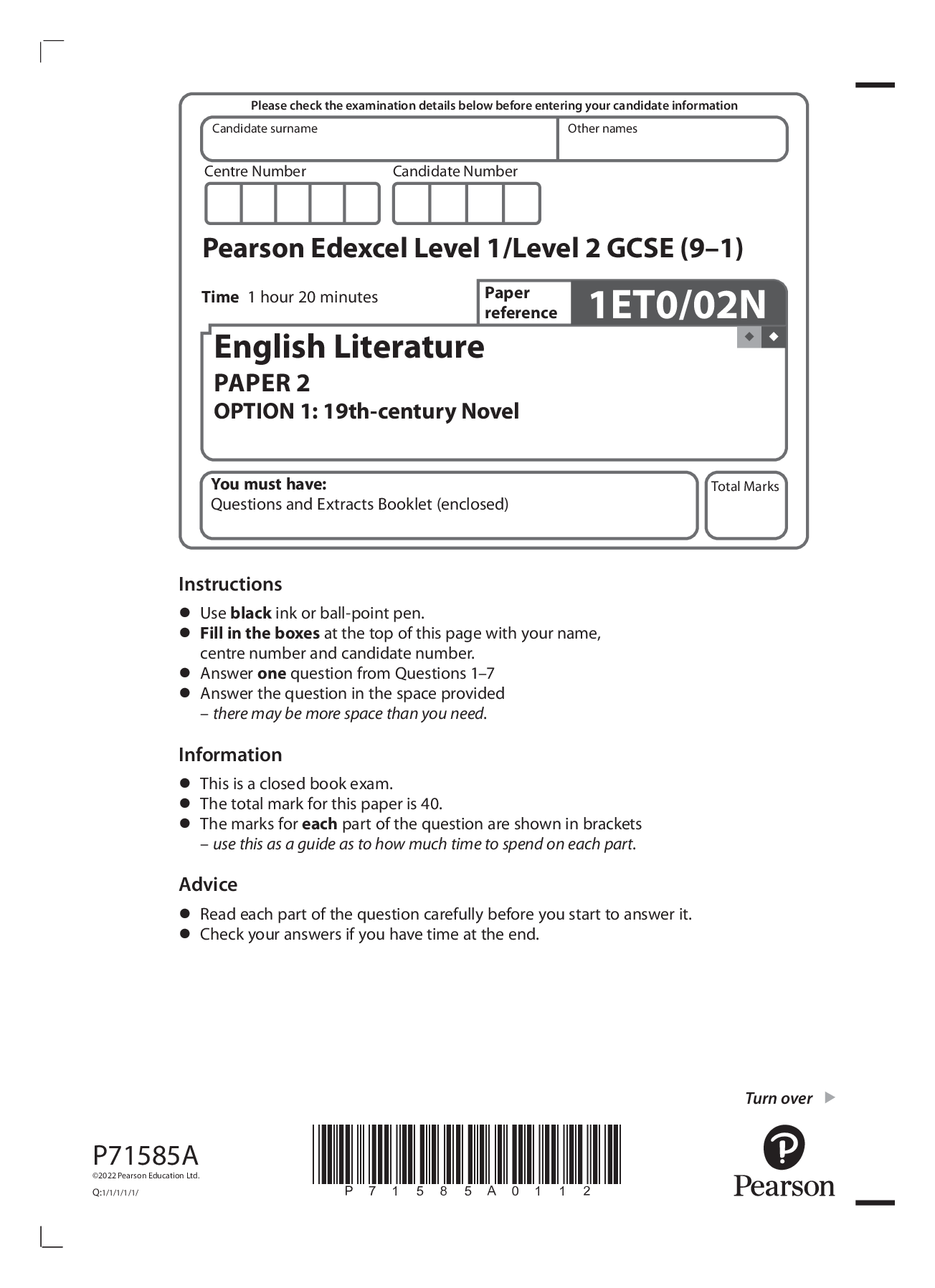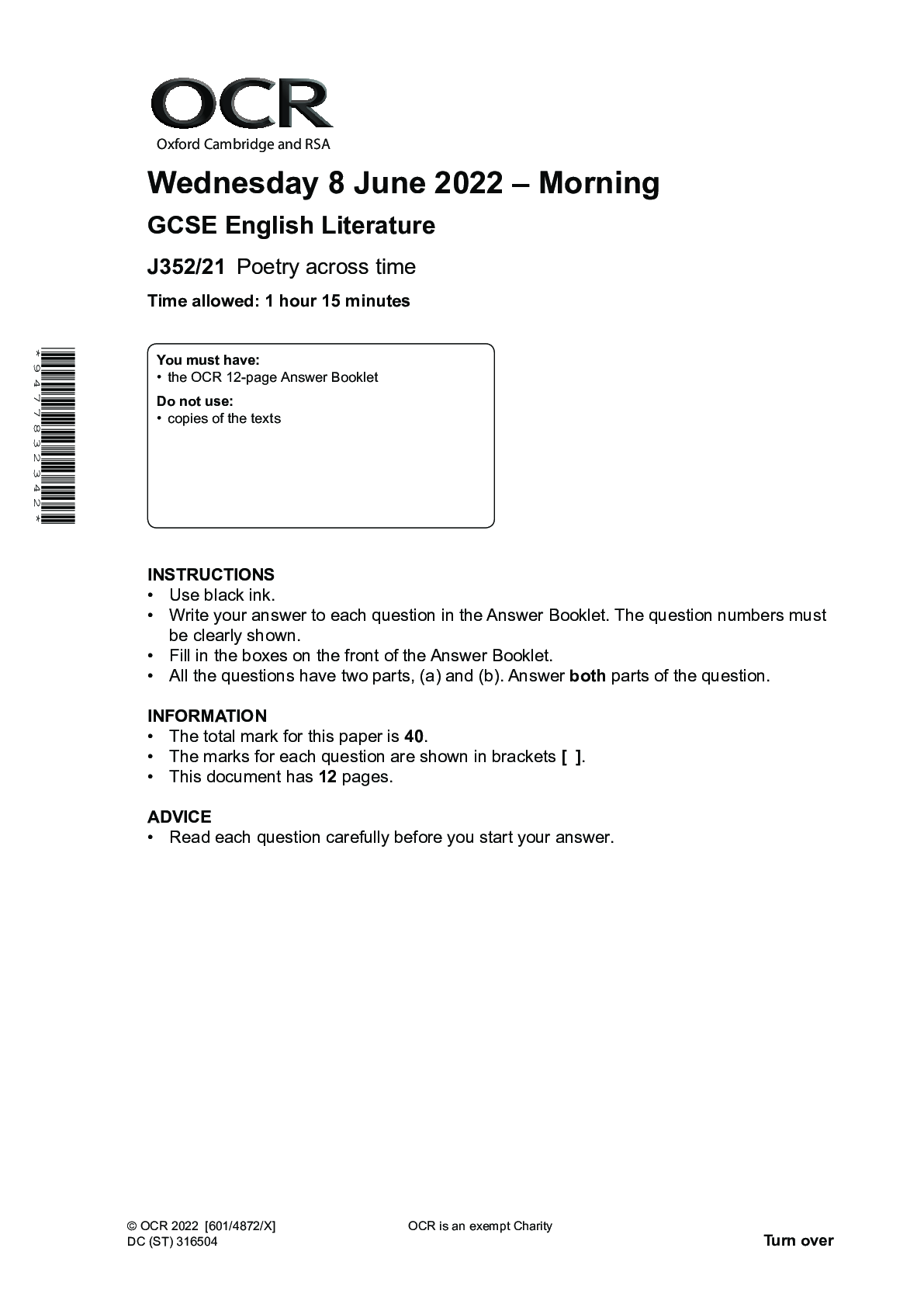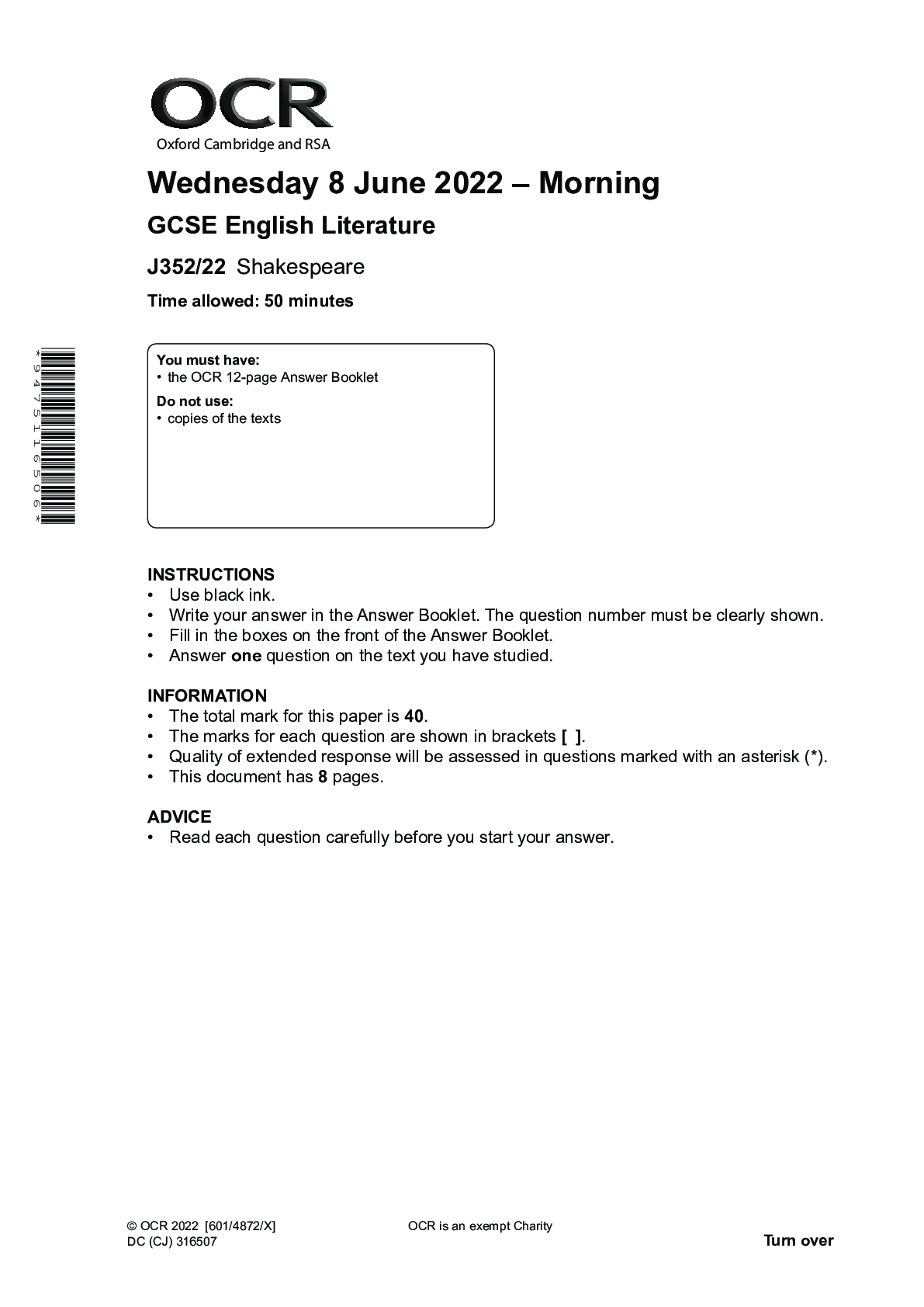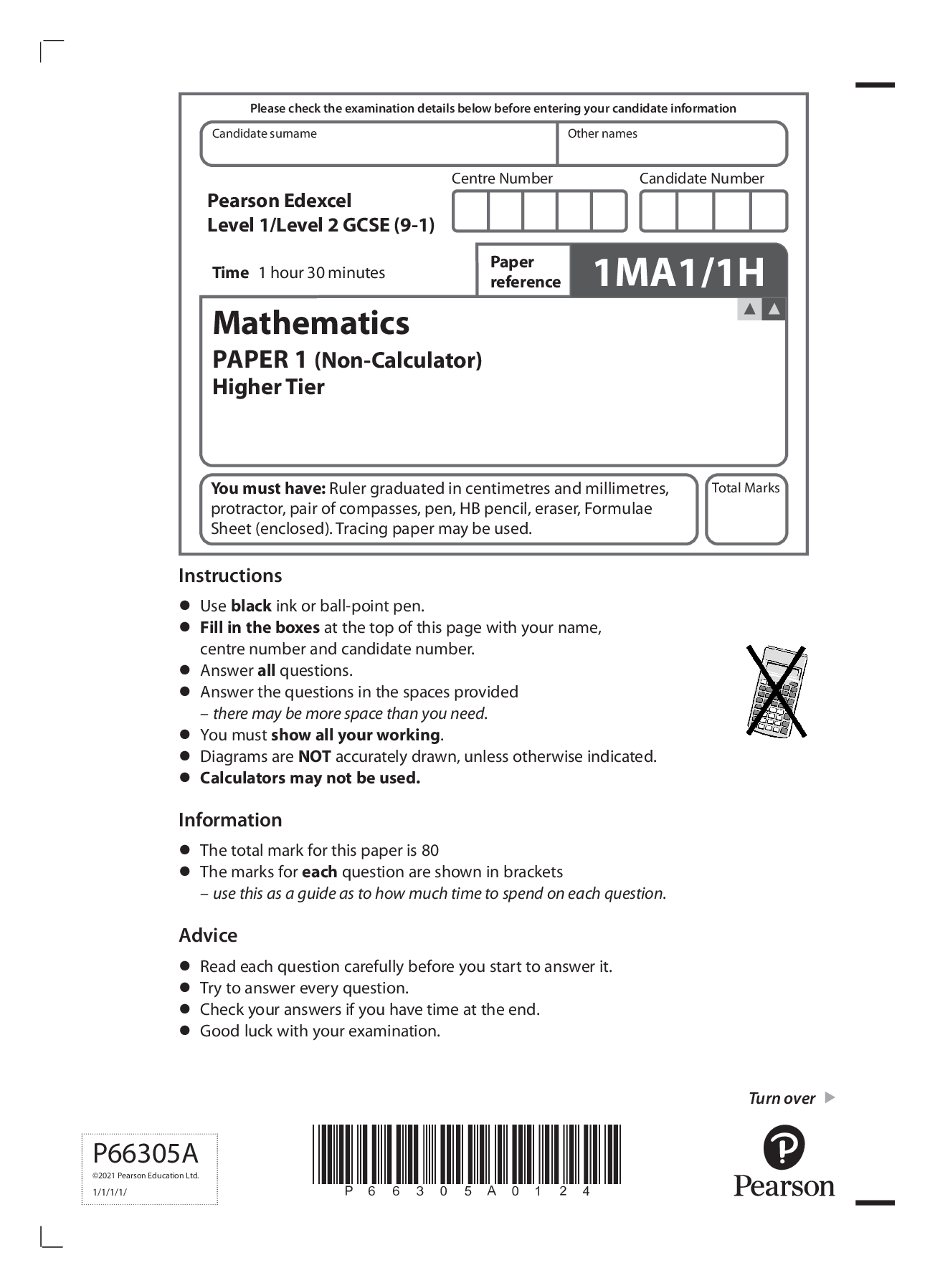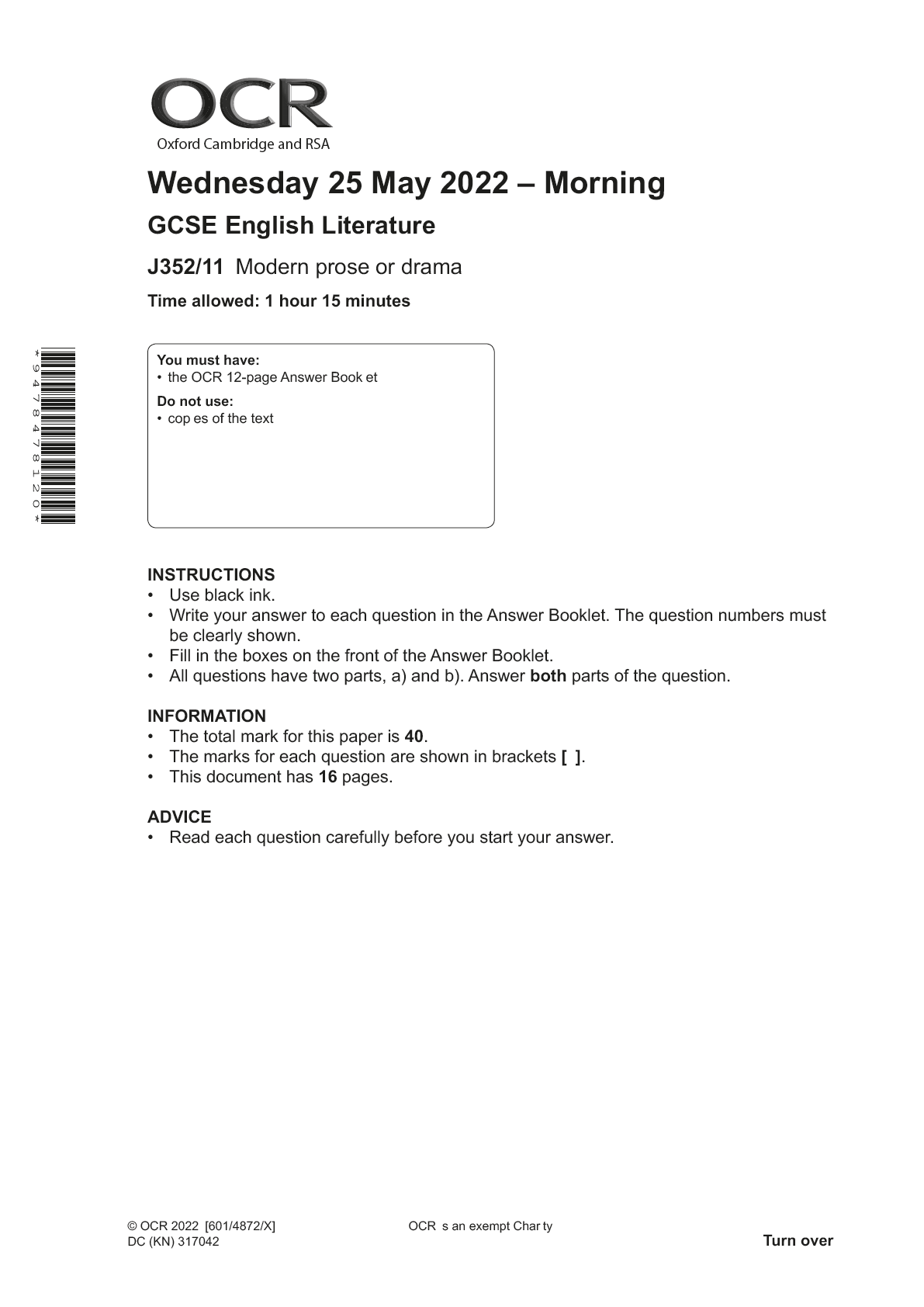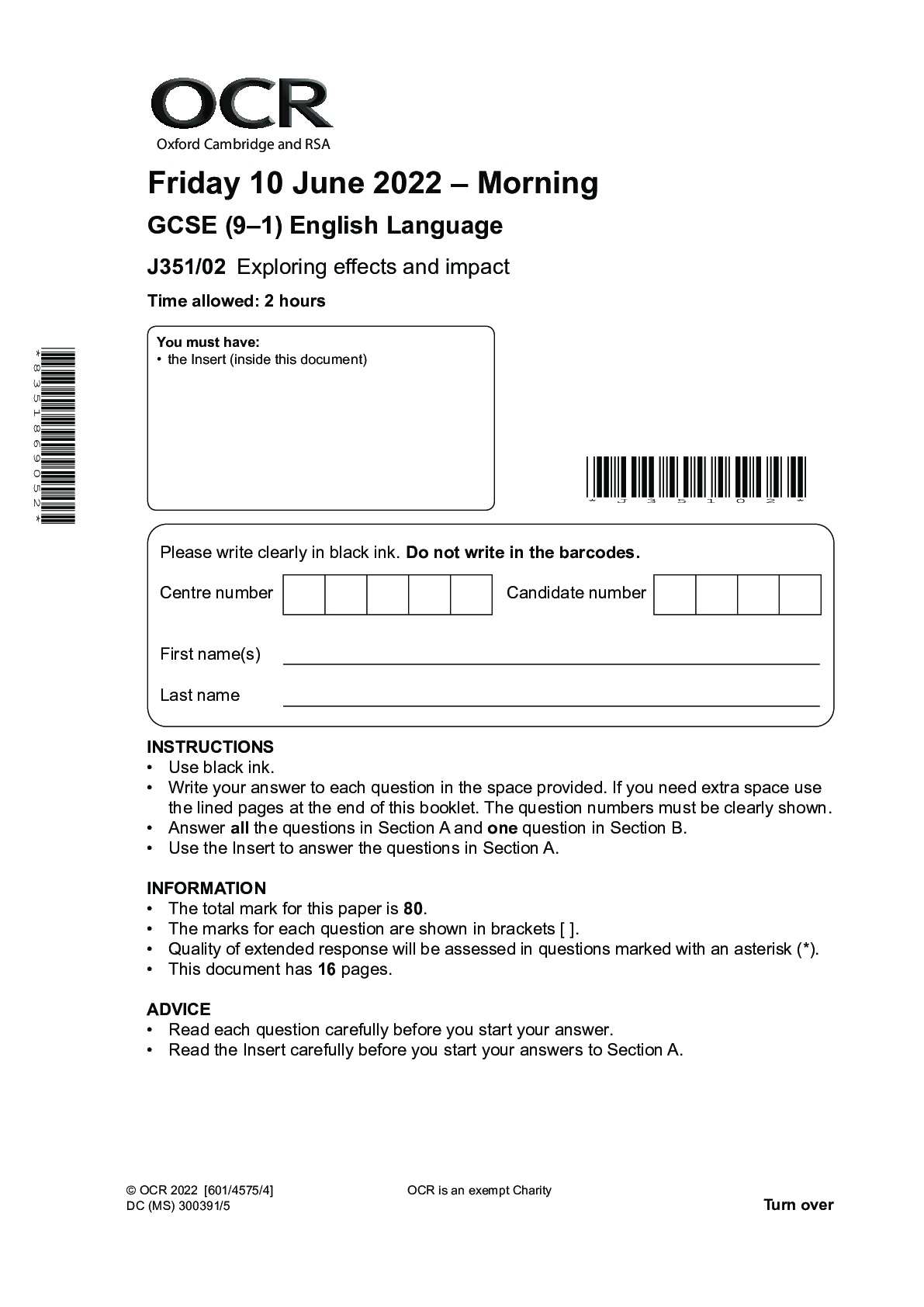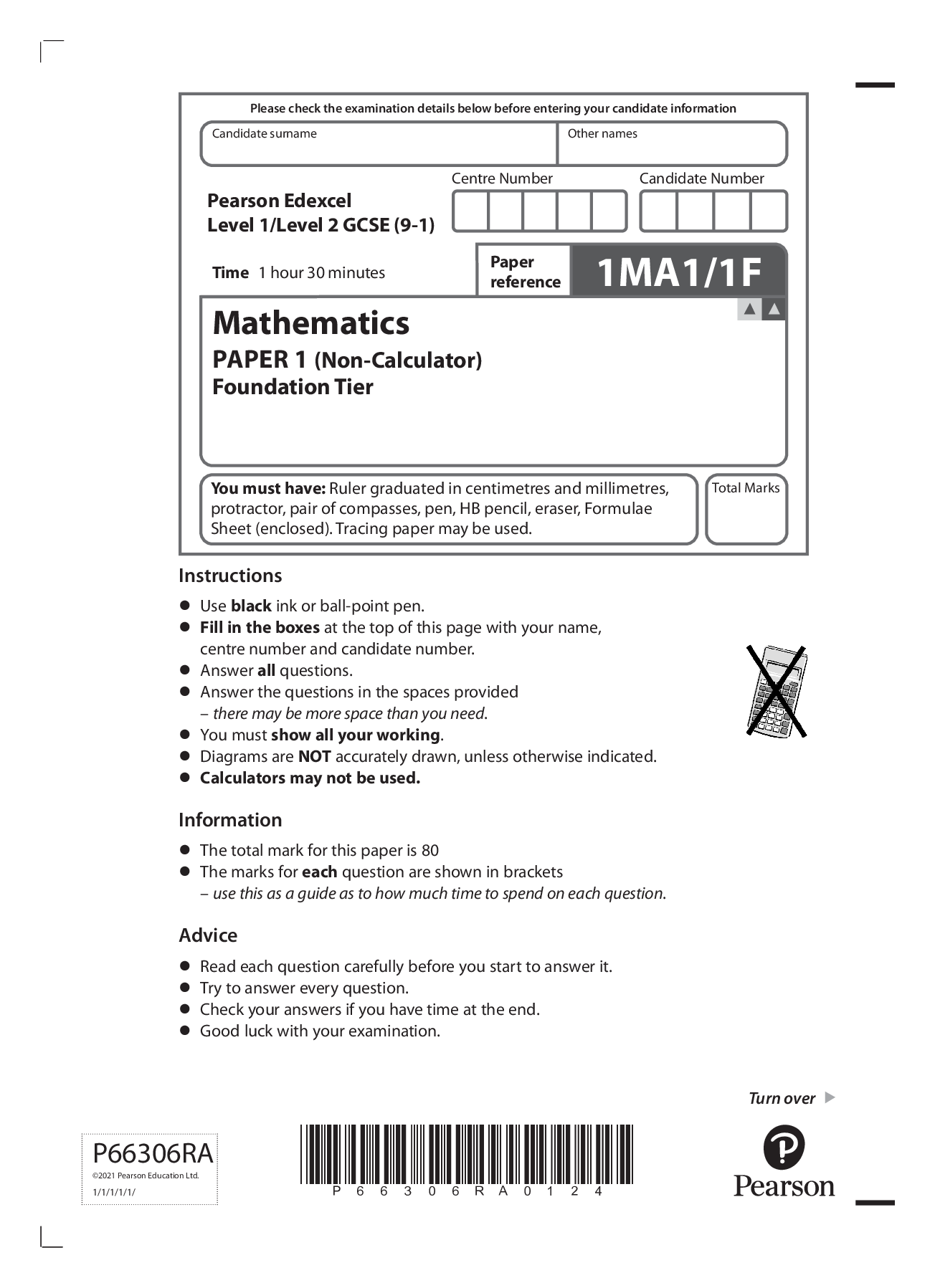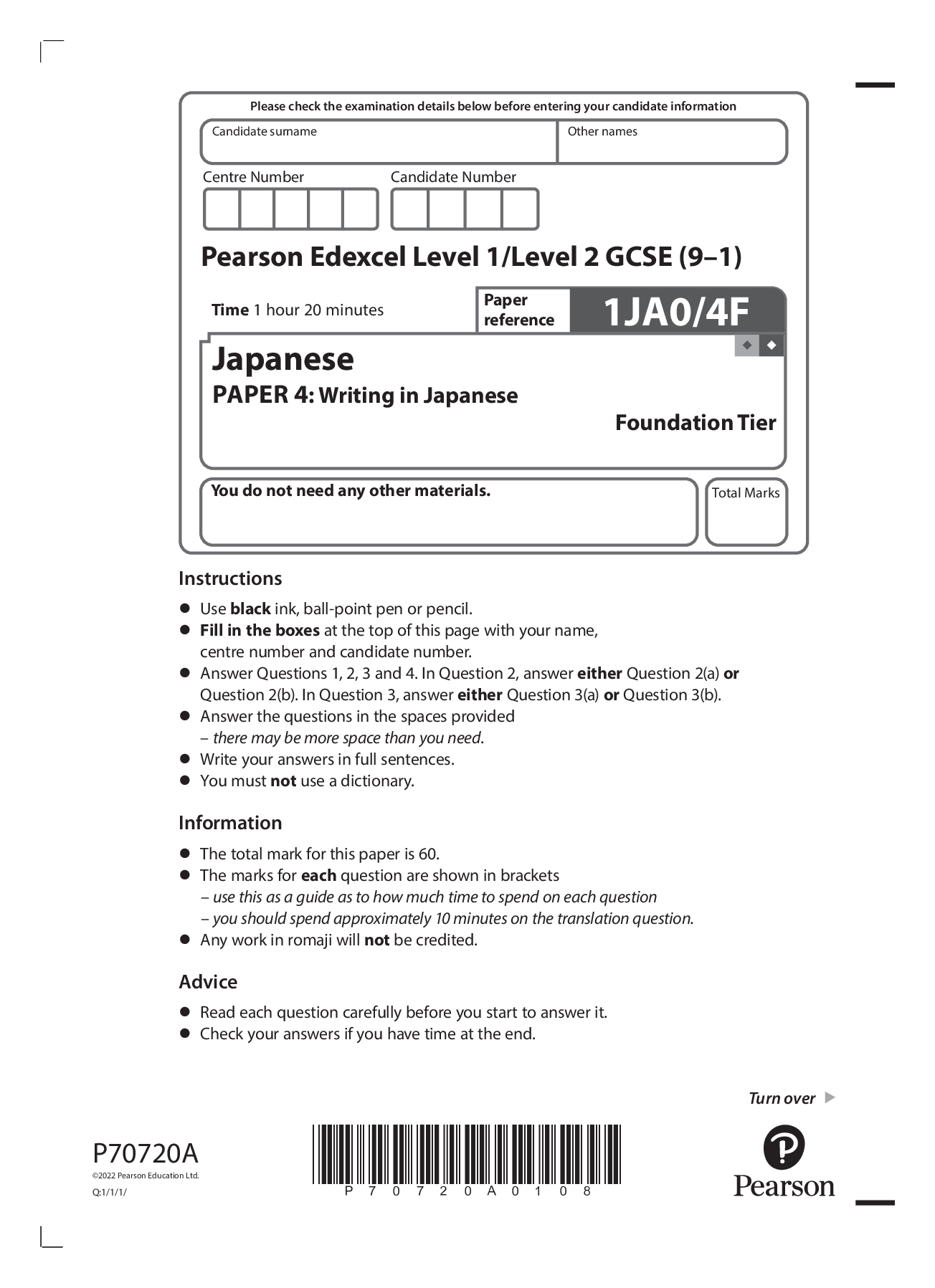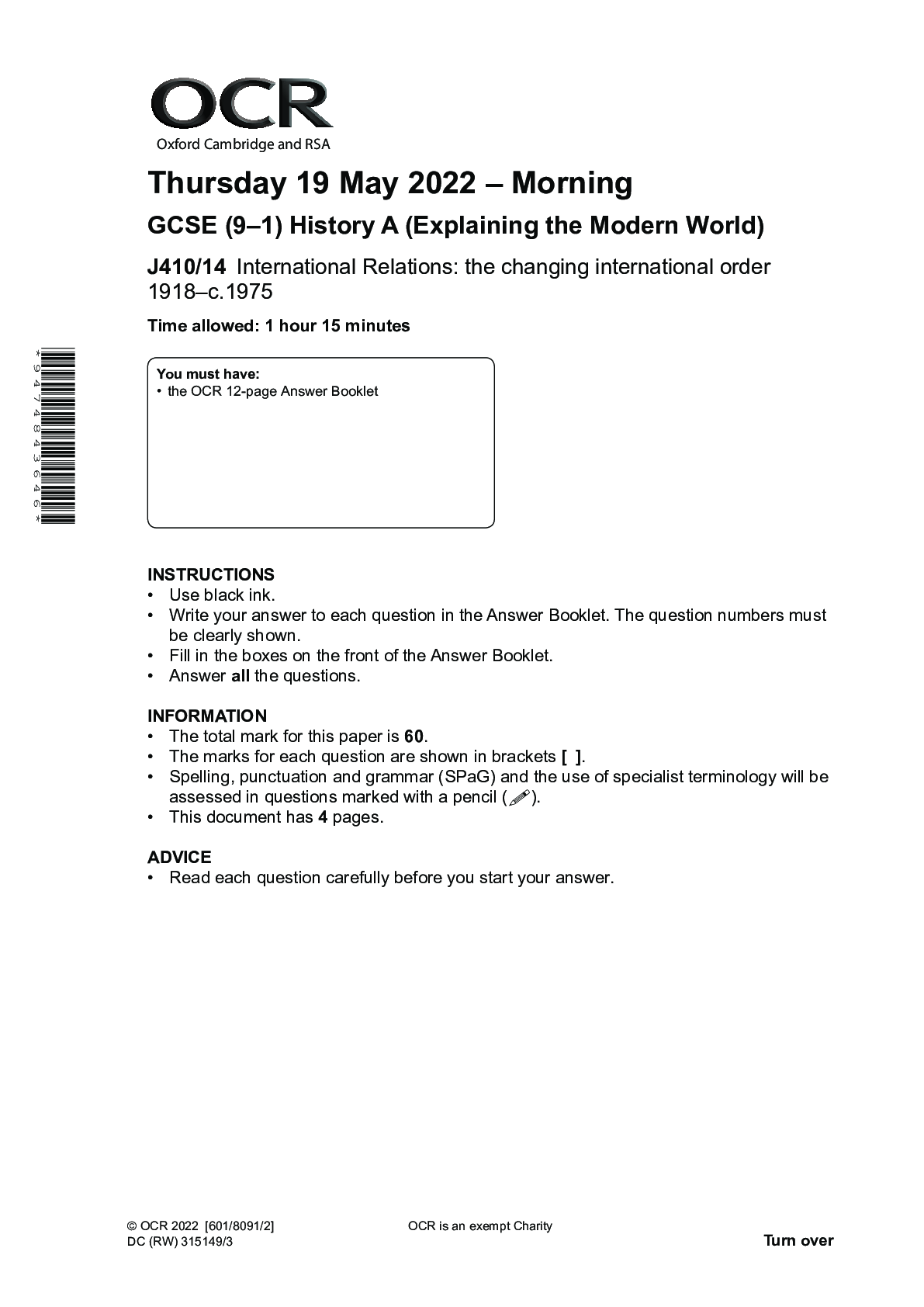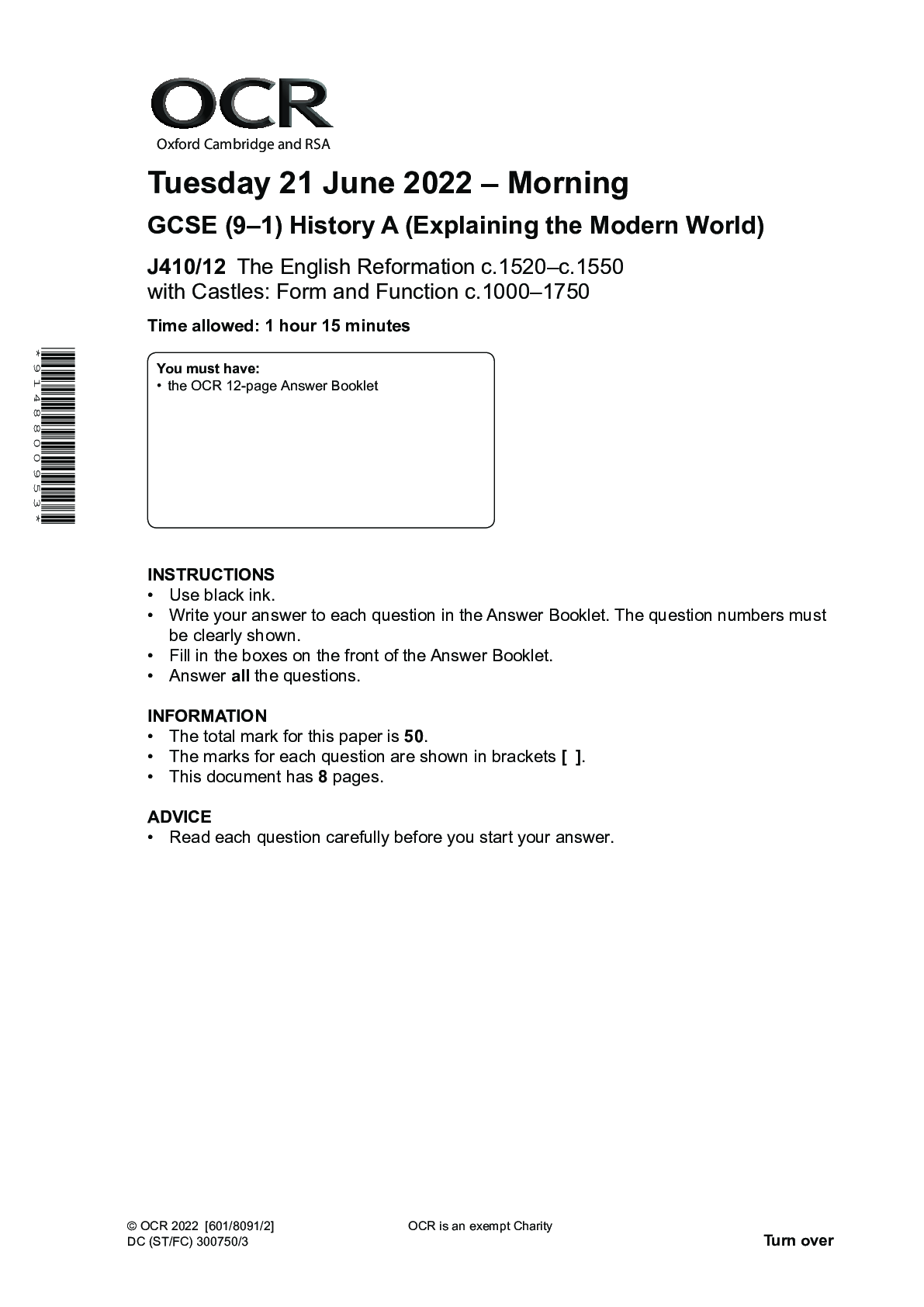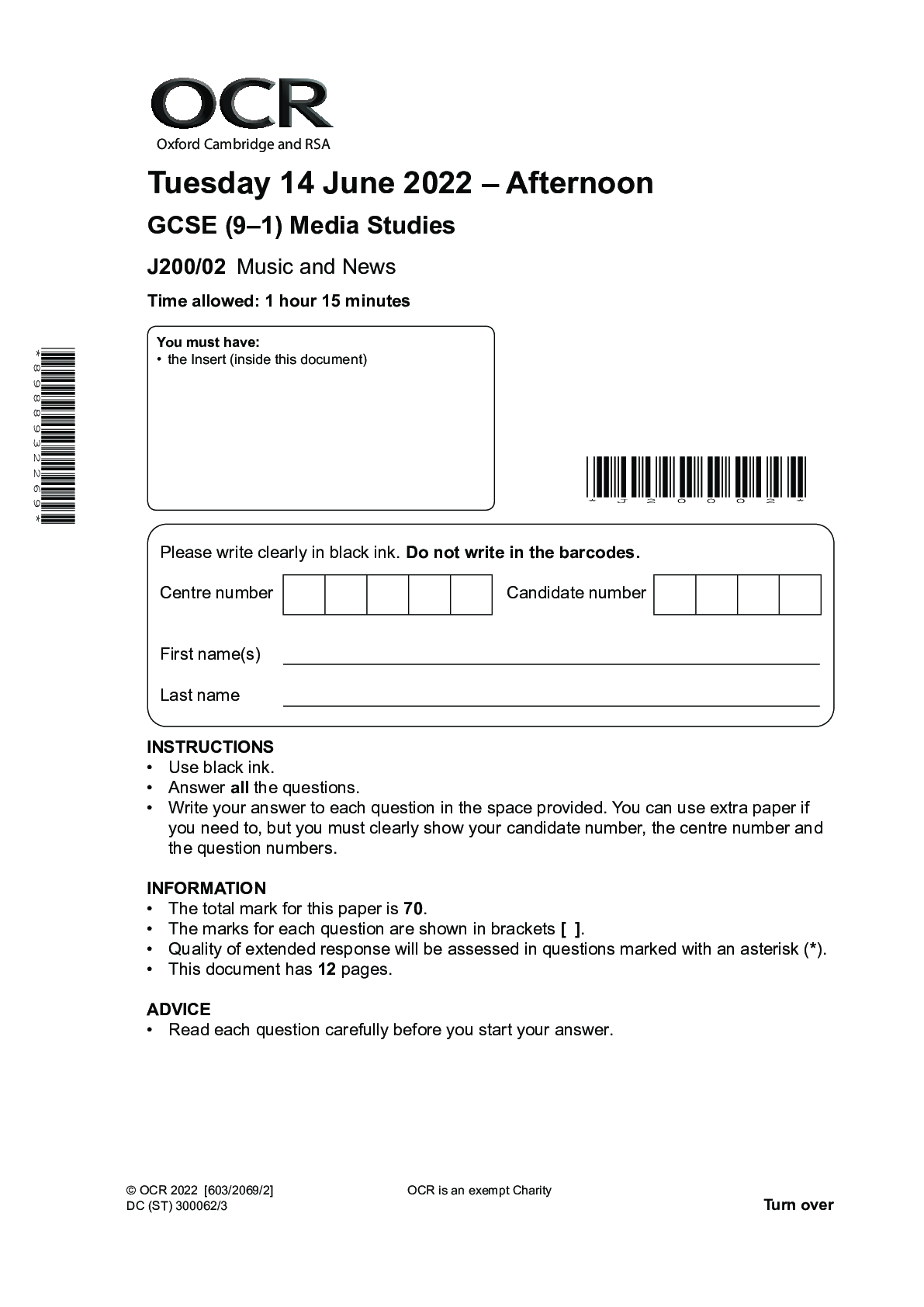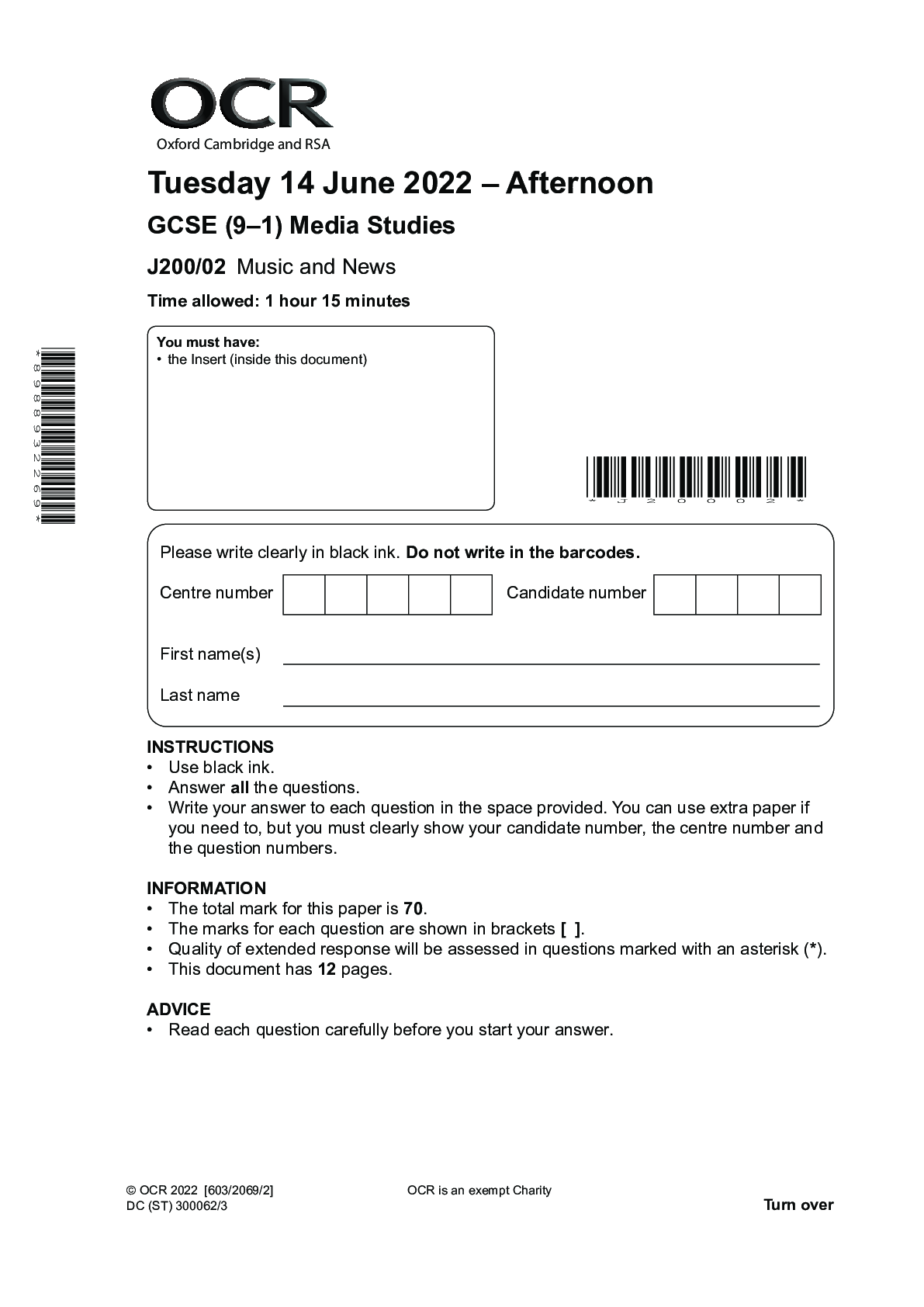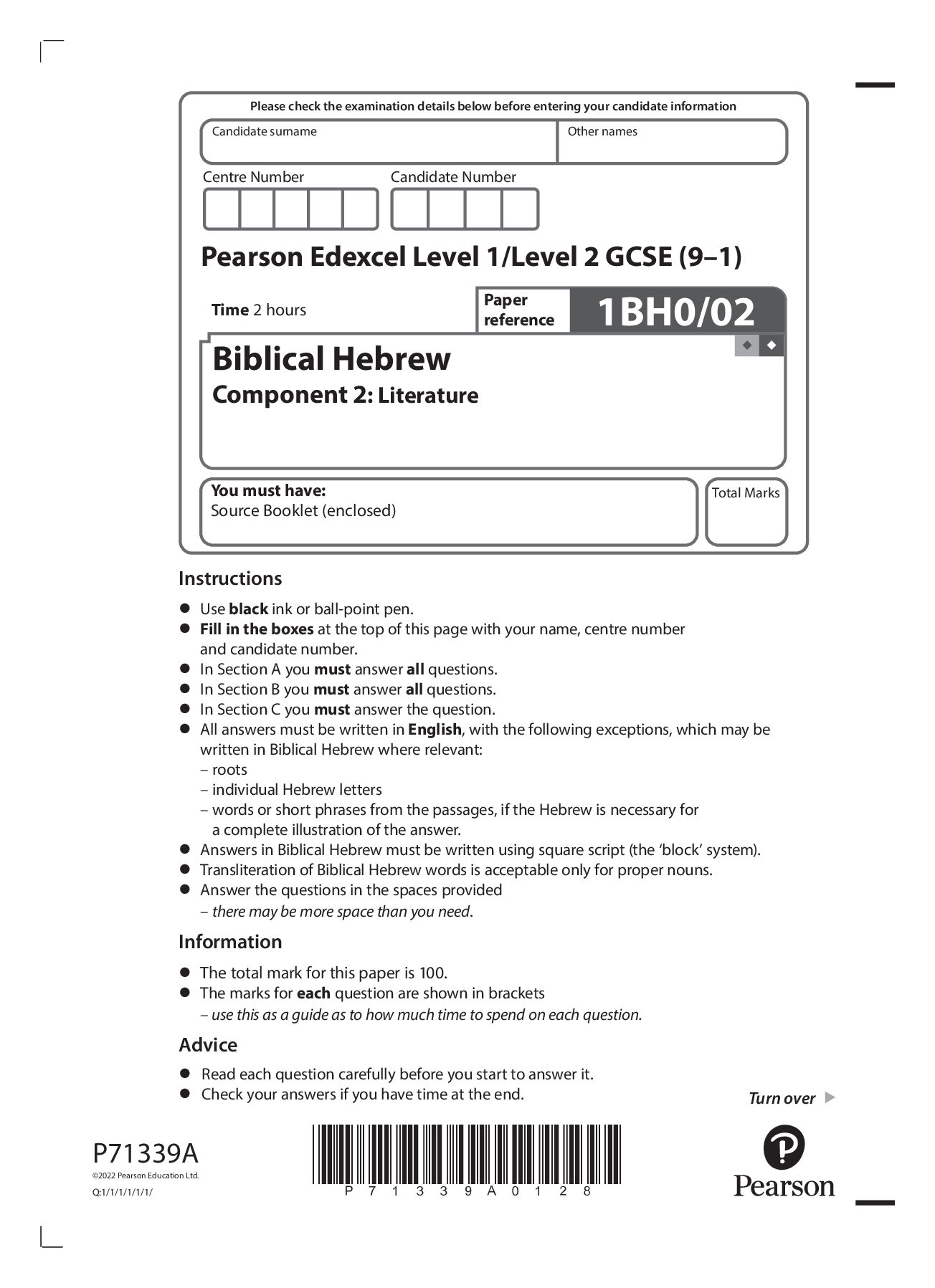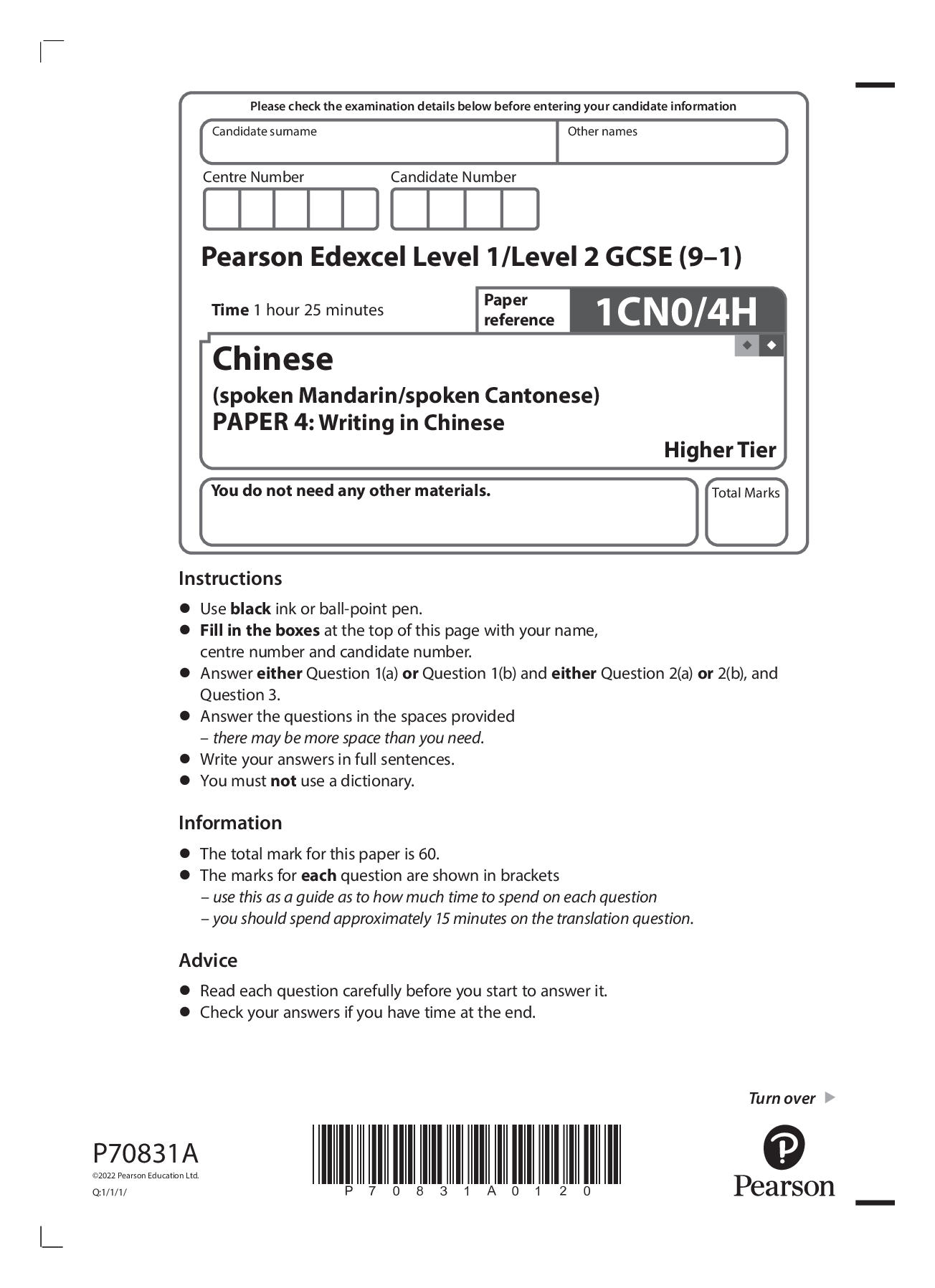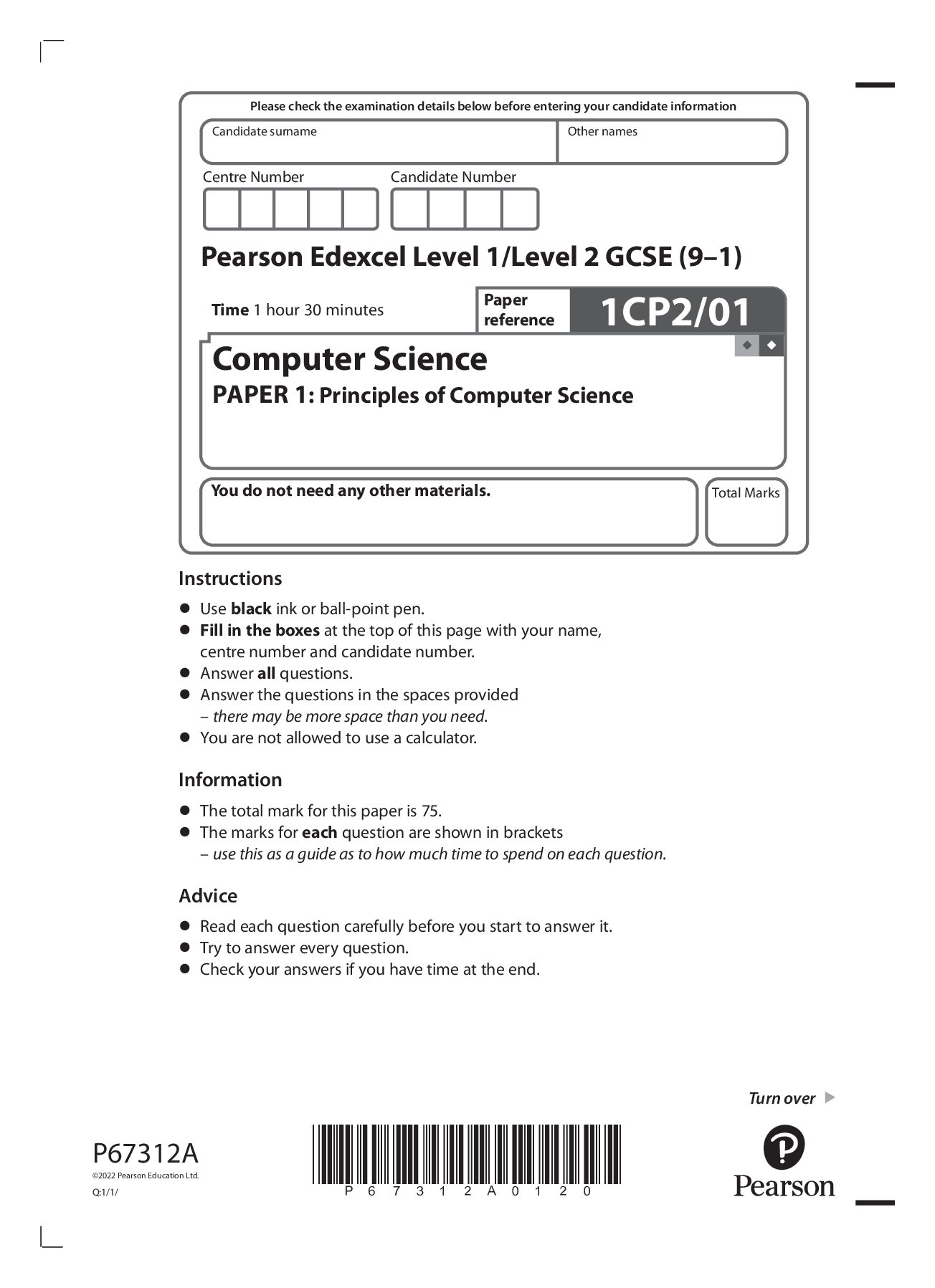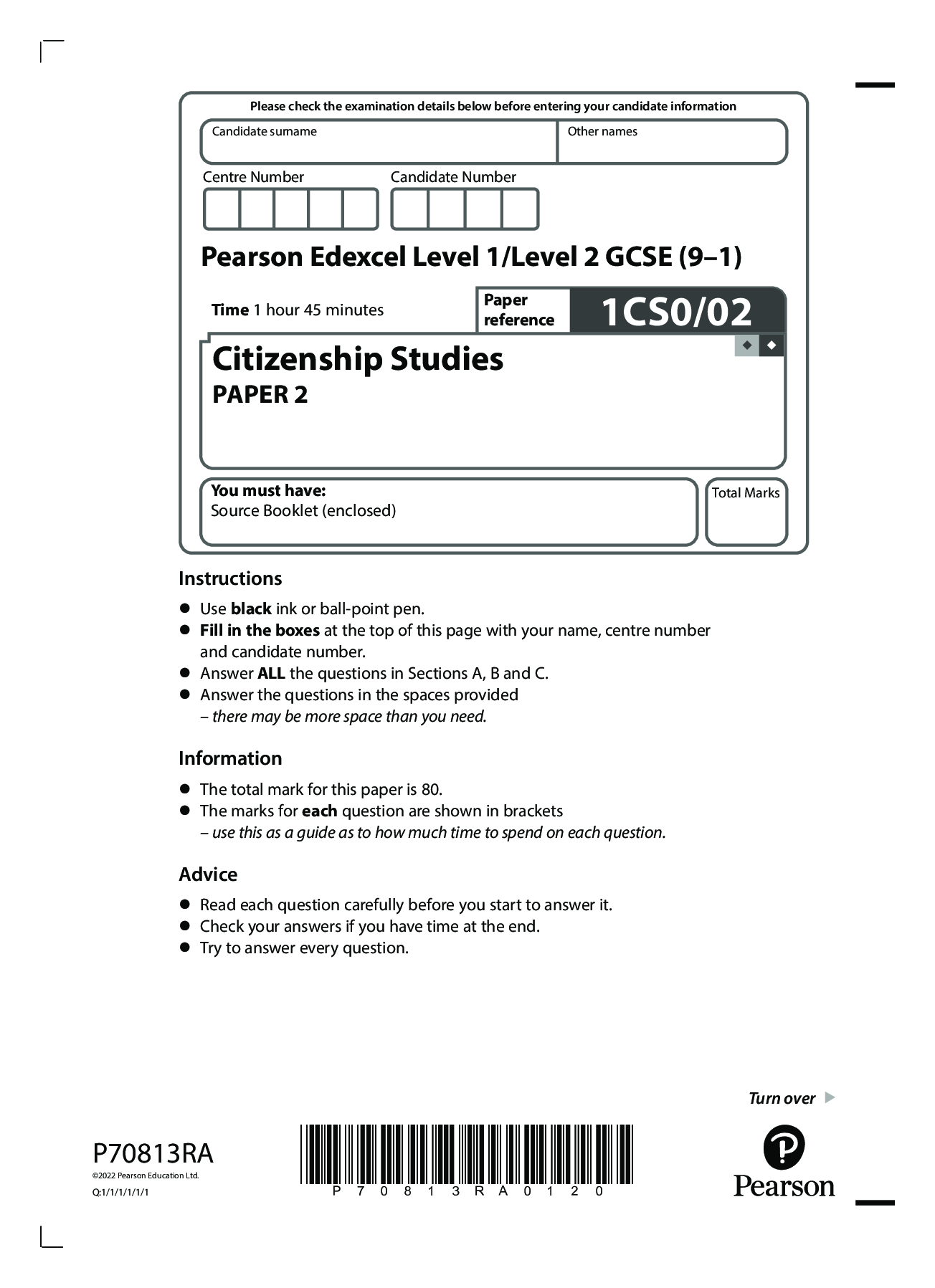Physical Education > QUESTION PAPER (QP) > Pearson Edexcel Level 1/2 GCSE (9-1) Time 1 hour 15 minutes Paper reference 1 PEO/02 Physical Educat (All)
Pearson Edexcel Level 1/2 GCSE (9-1) Time 1 hour 15 minutes Paper reference 1 PEO/02 Physical Education COMPONENT 2: Health and Performance
Document Content and Description Below
Instructions • Use black ink or ball-point pen. • Fill in the boxes at the top of this page with your name, centre number and candidate number. • Answer all questions. • Answer the quest... ions in the spaces provided – there may be more space than you need. Information • The total mark for this paper is 70. • The marks for each question are shown in brackets – use this as a guide as to how much time to spend on each question. Advice • Read each question carefully before you start to answer it. • Try to answer every question. • Check your answers if you have time at the end. You do not need any other materials. Physical Education COMPONENT 2: Health and Performance Time 1 hour 15 minutes Pearson Edexcel Level 1/2 GCSE (9–1) *P71112A0220* 2 Answer ALL questions. Write your answers in the spaces provided. Some questions must be answered with a cross in a box . If you change your mind about an answer, put a line through the box and then mark your new answer with a cross . 1 (a) Which one of the following skills would be placed towards the open end of the open-closed skill continuum? (1) A A footballer dribbling around a defender B A gymnast performing a handstand C A high board diver performing a double somersault D An athlete throwing a javelin (b) Which one of the following is a description of a high organisation skill? (1) A A skill that can be broken down easily into different phases B A skill that cannot be broken down and practised separately C A skill that is affected by the environment D A skill that requires little concentration to execute (c) Which one of the following affects optimum weight? (1) A Age B Bone structure C Ethnicity D Fitness (d) Which one of the following is associated with a sedentary lifestyle? (1) A Cycling 5km to work every day B Eating five portions of fruit and vegetables every day C Sitting still at work every day D Walking up the stairs instead of taking the lift every day *P71112A0320* Turn over 3 For Questions 1(e) and 1(f) use Figure 1 to decide whether A, B, C or D is correct. Figure 1 shows the reasons for red cards in the Premier Football League between the 2014/15 and 2017/18 seasons. 100 90 80 70 60 50 40 30 20 10 0 Percentage 2014/15 2015/16 2016/17 2017/18 Season Second yellow card Professional foul Handled ball Violent conduct (Source: © Sky Sports, 2017/ https://www.skysports.com/football/news/11096/11074552/ premier-league-red-cards-are-dismissals-on-the-rise) Figure 1 (e) Which one of the following reasons causes the lowest percentage of red cards each season? (1) A Handled ball B Professional foul C Second yellow card D Violent conduct (f) Identify the season when the largest percentage of players received a second yellow card. (1) A 2014/15 B 2015/16 C 2016/17 D 2017/18 (Total for Question 1 = 6 marks) *P71112A0420* 4 2 Participation in sport and physical activity can bring many health benefits. Complete Table 1 by: (a) Stating the type of each of the following health benefits. Benefit (a) Type of health benefit (i) Improved co-operation (1) (ii) Lowered resting heart rate (1) (iii) Reduced stress (1) Table 1 (b) Describe how participation in sport and physical activity can improve co-operation. (2) .................................................................................................................................................................................................................................................................................... .................................................................................................................................................................................................................................................................................... .................................................................................................................................................................................................................................................................................... .................................................................................................................................................................................................................................................................................... .................................................................................................................................................................................................................................................................................... .................................................................................................................................................................................................................................................................................... (Total for Question 2 = 5 marks) *P71112A0520* Turn over 5 3 Regular exercise can reduce the risk of coronary heart disease and osteoporosis. Explain two other long-term health risks that can be reduced through regular participation in exercise. (3) Long-term health risk 1 ..................................................................................................................................................................................................................................................................................... .................................................................................................................................................................................................................................................................................... .................................................................................................................................................................................................................................................................................... .................................................................................................................................................................................................................................................................................... .................................................................................................................................................................................................................................................................................... .................................................................................................................................................................................................................................................................................... .................................................................................................................................................................................................................................................................................... .................................................................................................................................................................................................................................................................................... (3) Long-term health risk 2 ..................................................................................................................................................................................................................................................................................... .................................................................................................................................................................................................................................................................................... .................................................................................................................................................................................................................................................................................... .................................................................................................................................................................................................................................................................................... .................................................................................................................................................................................................................................................................................... .................................................................................................................................................................................................................................................................................... .................................................................................................................................................................................................................................................................................... .................................................................................................................................................................................................................................................................................... (Total for Question 3 = 6 marks) *P71112A0620* 6 4 Figure 2 shows players working together to win a rugby scrum. (Source: © Paolo Bona/Shutterstock) Figure 2 Figure 3 shows three locations on the basic–complex skill continuum. Basic Complex A B C Figure 3 (a) Identify, using A, B or C in Figure 3, where on the basic–complex skill continuum the rugby scrum would most likely be placed. (1) .................................................................................................................................................................................................................................................................................... *P71112A0720* Turn over 7 (b) State two differences between a basic skill and a complex skill. (2) 1 ............................................................................................................................................................................................................................................................................... .................................................................................................................................................................................................................................................................................... .................................................................................................................................................................................................................................................................................... .................................................................................................................................................................................................................................................................................... 2 ............................................................................................................................................................................................................................................................................... .................................................................................................................................................................................................................................................................................... .................................................................................................................................................................................................................................................................................... .................................................................................................................................................................................................................................................................................... (Total for Question 4 = 3 marks) *P71112A0820* 8 5 Pavel is a 100m breaststroke swimmer. He uses SMART targets to improve his performance. Explain why Pavel’s SMART targets should be realistic and time-bound. (i) Realistic (2) .................................................................................................................................................................................................................................................................................... .................................................................................................................................................................................................................................................................................... .................................................................................................................................................................................................................................................................................... .................................................................................................................................................................................................................................................................................... .................................................................................................................................................................................................................................................................................... .................................................................................................................................................................................................................................................................................... (ii) Time-bound (2) .................................................................................................................................................................................................................................................................................... .................................................................................................................................................................................................................................................................................... .................................................................................................................................................................................................................................................................................... .................................................................................................................................................................................................................................................................................... .................................................................................................................................................................................................................................................................................... .................................................................................................................................................................................................................................................................................... (Total for Question 5 = 4 marks) *P71112A0920* Turn over 9 6 Figure 4 shows a football coach providing feedback to an under 11 football team after a game has finished. (Source: © Fotokostic/Shutterstock) Figure 4 (a) State the type of feedback being used by the football coach after the game has finished in Figure 4. (1) .................................................................................................................................................................................................................................................................................... (b) Explain why concurrent feedback from the football coach could improve the performance of the football team. (3) .................................................................................................................................................................................................................................................................................... .................................................................................................................................................................................................................................................................................... .................................................................................................................................................................................................................................................................................... .................................................................................................................................................................................................................................................................................... .................................................................................................................................................................................................................................................................................... .................................................................................................................................................................................................................................................................................... .................................................................................................................................................................................................................................................................................... .................................................................................................................................................................................................................................................................................... (Total for Question 6 = 4 marks) *P71112A01020* 10 7 Mental rehearsal is a technique used by many athletes to improve performance. State two benefits of mental rehearsal. (2) 1 ............................................................................................................................................................................................................................................................................... .................................................................................................................................................................................................................................................................................... .................................................................................................................................................................................................................................................................................... 2 ............................................................................................................................................................................................................................................................................... .................................................................................................................................................................................................................................................................................... .................................................................................................................................................................................................................................................................................... (Total for Question 7 = 2 marks) 8 The NHS recommends that teenagers have 8 to 10 hours of sleep a day to maintain the correct work/sleep balance for good health. Explain why a lack of sleep can have a negative impact on physical health. (2) .................................................................................................................................................................................................................................................................................... .................................................................................................................................................................................................................................................................................... .................................................................................................................................................................................................................................................................................... .................................................................................................................................................................................................................................................................................... .................................................................................................................................................................................................................................................................................... .................................................................................................................................................................................................................................................................................... (Total for Question 8 = 2 marks) *P71112A01120* Turn over 11 9 Figure 5 shows Bella being taught to swim using a float for mechanical guidance. (Source: © Joe MoJo/Shutterstock) Figure 5 State one advantage and one disadvantage of using mechanical guidance when teaching Bella to swim. (i) Advantage (1) .................................................................................................................................................................................................................................................................................... .................................................................................................................................................................................................................................................................................... .................................................................................................................................................................................................................................................................................... (ii) Disadvantage (1) .................................................................................................................................................................................................................................................................................... .................................................................................................................................................................................................................................................................................... .................................................................................................................................................................................................................................................................................... (Total for Question 9 = 2 marks) *P71112A01220* 12 10 Coaches use different types of practice structure to teach different skills. Explain why variable practice is used to develop open [Show More]
Last updated: 1 year ago
Preview 1 out of 20 pages
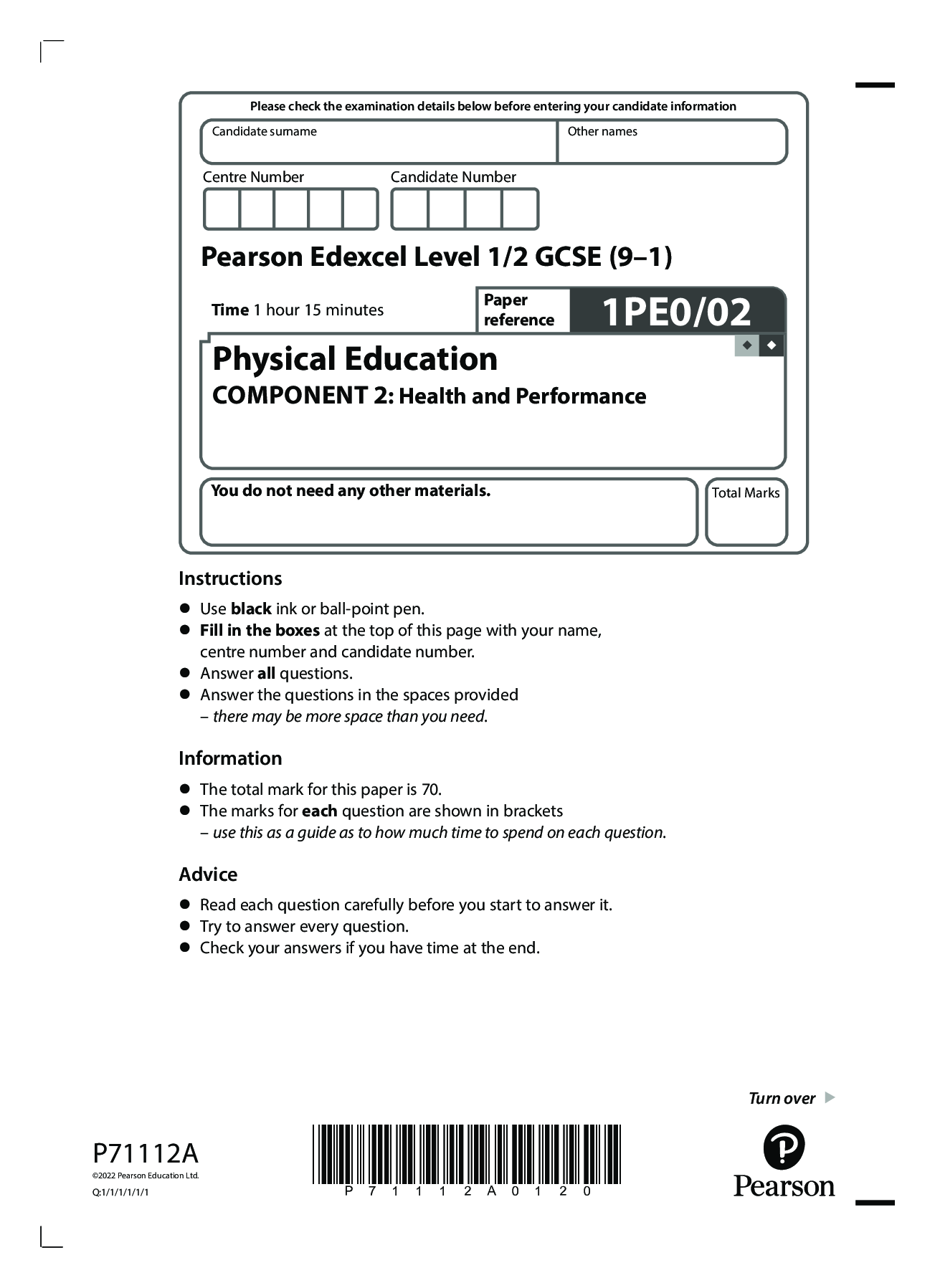
Buy this document to get the full access instantly
Instant Download Access after purchase
Add to cartInstant download
We Accept:

Reviews( 0 )
$7.00
Document information
Connected school, study & course
About the document
Uploaded On
Apr 04, 2023
Number of pages
20
Written in
Additional information
This document has been written for:
Uploaded
Apr 04, 2023
Downloads
0
Views
71

